
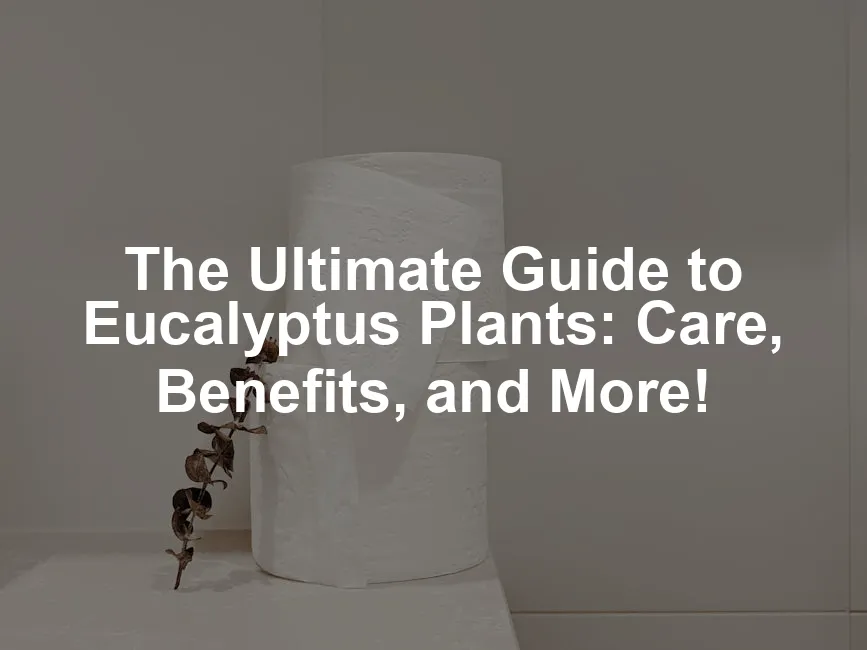
The Ultimate Guide to Eucalyptus Plants: Care, Benefits, and More!
Introduction
Eucalyptus plants, often recognized for their aromatic leaves and striking appearance, are truly a sight to behold. Originating from Australia, these evergreen wonders are part of a diverse family, with over 700 species to their name. Some varieties tower majestically over the landscape, while others gracefully adapt to indoor life. Their distinct, silvery-blue foliage adds a splash of color and charm to any space, making them a favorite among gardeners and interior decorators alike. But eucalyptus isn’t just a pretty face! These plants come with a treasure trove of practical uses. From essential oils that can uplift your mood to their presence in traditional medicine, eucalyptus has earned its place in our homes and hearts. Plus, they are natural air purifiers, helping to keep indoor environments fresh and invigorating. However, raising a eucalyptus plant can be a bit like trying to train a cat—challenging but rewarding. They thrive on specific light and temperature conditions, and they aren’t fans of overwatering. Neglect their needs, and you might find yourself with a sad, droopy plant. Before you rush out to buy one, it’s essential to understand their care requirements to ensure you don’t end up with a botanical disaster. In this guide, we’ll navigate the delightful yet demanding world of eucalyptus plants. From their unique care needs to their ecological benefits, you’ll soon see why these plants deserve a place in your home. Get ready to dive into the fascinating facts, practical tips, and everything else you need to know about the eucalyptus plant!
Summary of Key Points
In this comprehensive guide, we will cover everything you need to know about eucalyptus plants. You’ll discover their unique care requirements, including essential light, watering, and temperature needs. We’ll also explore the various species of eucalyptus and how they adapt to both indoor and outdoor environments. Curious about the benefits of having eucalyptus in your home? You’ll learn about their aesthetic appeal and health advantages, such as enhancing air quality and uplifting your spirits with their refreshing aroma. Finally, we’ll touch on the ecological significance of eucalyptus, illustrating their contribution to wildlife habitats and biodiversity. By the end of this guide, you’ll be eager to embrace the eucalyptus plant and all its wonders!
Understanding Eucalyptus Plants
Origins and Characteristics
Eucalyptus plants are native to Australia, where they thrive in diverse environments. These trees have adapted to various climates, making them a global favorite. With over 700 species, eucalyptus showcases a variety of sizes and shapes, from towering giants in the wild to charming dwarf cultivars perfect for indoor life. Picture a eucalyptus forest—some trees stretch skyward, while others create a delightful ground cover. They boast distinctive features that set them apart from other plants. Their leaves are not just attractive; they release a delightful aroma when crushed, filling the air with a refreshing scent. This aromatic quality makes eucalyptus a popular choice in essential oils and home remedies. The bark of eucalyptus is equally captivating. Some species have smooth, colorful bark that peels away in strips, while others have rough, textured surfaces. This unique characteristic adds visual interest and charm to gardens and landscapes. Whether you’re admiring their elegant leaves or the artistic nature of their bark, eucalyptus plants are a feast for the senses. Speaking of the senses, if you’re looking to enhance your home’s ambiance, consider a Eucalyptus Scented Candle. It not only fills your space with a refreshing aroma but also sets a calming mood, perfect for unwinding after a long day.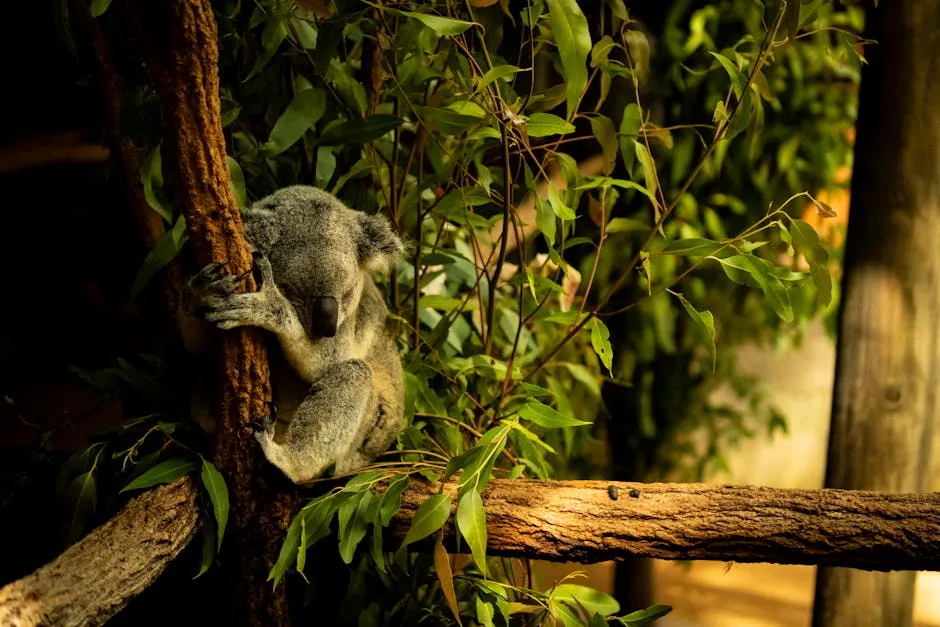
Ecological Benefits
Eucalyptus trees play a vital role in ecosystems. They provide essential habitats for various wildlife, including birds, insects, and marsupials. The dense foliage offers shelter, while the flowers attract pollinators, supporting biodiversity. With their towering heights, eucalyptus trees create a multi-layered environment that benefits many species. These trees are also champions of air quality. Eucalyptus releases essential oils into the atmosphere, which can purify the air. Their leaves absorb carbon dioxide and release oxygen, helping to combat climate change. Plus, they provide shade, making them excellent companions for outdoor gatherings. Imagine lounging under a eucalyptus tree, enjoying its cool shade while sipping lemonade on a hot summer day! Historically, eucalyptus has been used in traditional medicine for its antiseptic and anti-inflammatory properties. Indigenous cultures have long recognized its healing qualities, using eucalyptus leaves for various remedies. Today, many still turn to this plant for relief from colds, coughs, and other ailments, making it a staple in herbal medicine. In conclusion, eucalyptus plants are not only visually stunning but also ecologically significant. From their diverse origins and unique characteristics to their profound benefits for wildlife and air quality, these trees truly deserve their place in our gardens and homes. Curious about how to care for your eucalyptus? Stay tuned for our in-depth care guide!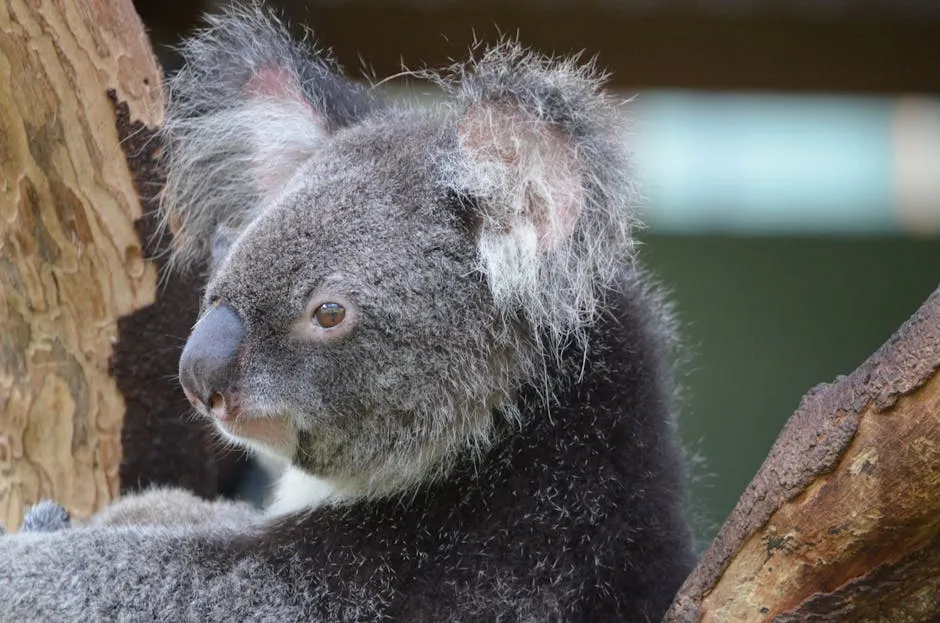
Eucalyptus Care Guide
Light Requirements
Eucalyptus plants thrive on sunlight. They need at least 6 hours of direct sunlight daily to stay happy and healthy. Think of them as sunbathers; the more, the merrier! So, where should you place your beloved eucalyptus? The answer lies in southern exposure. This sunny spot will keep your plant beaming with joy. Inadequate light can lead to a sad situation. Poor lighting will cause your eucalyptus to deteriorate quickly. You may notice its leaves turning yellow or dropping off. That’s not the kind of attention you want for your plant! Make it a point to find the brightest spot in your home to ensure your eucalyptus thrives.
Watering and Humidity
Watering your eucalyptus plant is a bit of an art. Water thoroughly until it drains out the bottom, then wait until the soil is nearly dry before giving it another drink. Overwatering can lead to root rot. Nobody wants a soggy bottom in their plant pot! Check the moisture levels by sticking your finger into the soil. If it feels dry a couple of inches down, it’s time to water. During winter, you’ll want to reduce watering as the plant enters a rest period. As for humidity, eucalyptus is pretty easy-going. Typical household humidity levels should suffice; no extra misting is necessary. However, if you live in a very dry area, consider placing a small humidifier nearby. Your eucalyptus will appreciate the extra moisture without feeling overwhelmed. An Indoor Plant Humidifier could be a great addition to your care routine!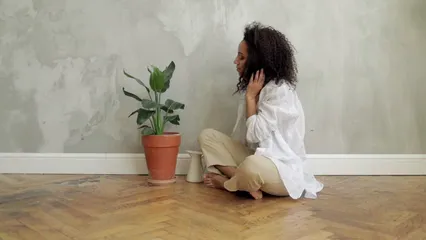
Temperature and Seasonal Care
When it comes to temperature, eucalyptus plants prefer a cozy range of 65 to 75°F. They’re not fans of extreme temperatures, so keep them away from heating vents or drafty windows. During winter, it’s crucial to lower the temperature to around 45 to 50°F. This cool spell helps them rest and recharge. Speaking of rest, don’t skip the all-important winter rest period. During this time, cut back on watering and avoid feeding. Your eucalyptus will thank you for this downtime, maintaining its vigor for the growing season ahead. A little patience goes a long way in ensuring your plant’s long-term health! In summary, caring for your eucalyptus plant involves giving it plenty of sunlight, a careful watering routine, and the right temperatures throughout the year. With these tips in hand, your eucalyptus will flourish and bring joy to your home for years to come!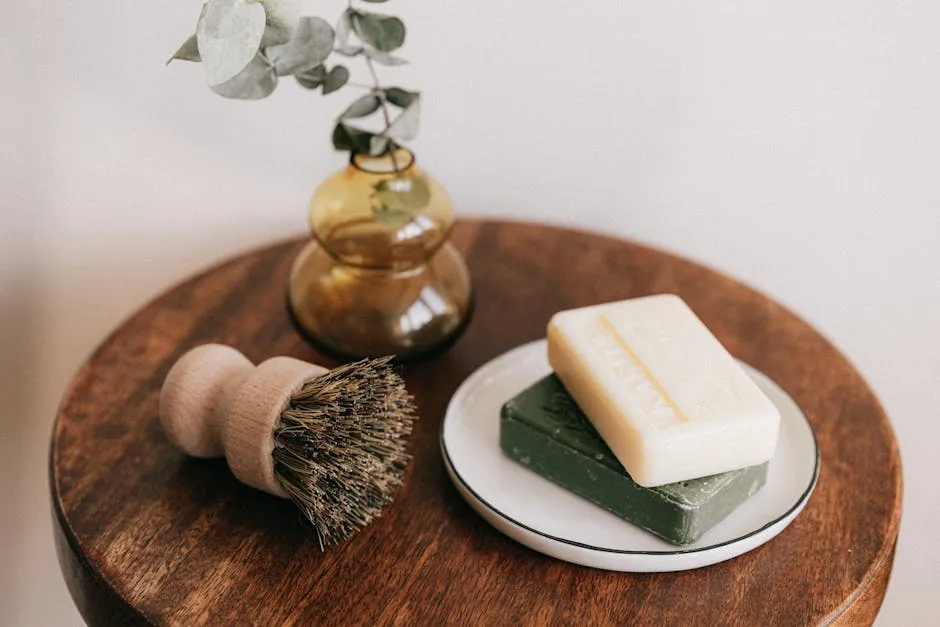
Re-potting and Soil Mix
Re-potting a eucalyptus plant is essential for its growth. Aim to re-pot every spring. Fast-growing varieties may need it twice a year. Signs that your plant needs a new pot include roots growing out of the drainage holes or slowing growth. If your eucalyptus seems cramped, it’s time for a fresh start. When choosing a pot, opt for one or two sizes larger. Ensure it has a drainage hole. This prevents water from accumulating, which can lead to root rot. Now, let’s talk soil! A well-draining mix is vital for eucalyptus. Combine equal parts Organic Potting Soil, perlite or sharp sand, and peat moss. This blend promotes healthy roots and drainage. Feeding your eucalyptus is crucial. Use Plant Fertilizer once a month during the growing season. This keeps the plant happy and nourished. Remember, a little goes a long way! Proper re-potting and soil mix set the stage for your eucalyptus to flourish.
Common Varieties and Their Care
Eucalyptus gunnii, also known as cedar gum, is a popular choice for indoor growth. This variety is known for its aromatic leaves and striking appearance. It thrives indoors but can outgrow its space quickly. Another great option is Eucalyptus citriodora, or lemon eucalyptus. Its lemony scent can brighten any room and repel pests. Care varies among eucalyptus species. Eucalyptus gunnii prefers bright light and regular watering. Eucalyptus citriodora enjoys similar conditions but requires slightly more humidity. Always ensure good drainage to avoid issues. If space is limited, consider dwarf cultivars like Eucalyptus pulverulenta. These little gems last indoors for one to five years. They’re perfect for small apartments or cozy corners. Just remember, even dwarf varieties need proper care to thrive. With the right attention, your eucalyptus will be a delightful addition to your indoor garden!
The Benefits of Eucalyptus Plants
Aesthetic Appeal
Eucalyptus plants are the secret ingredient for sprucing up home decor. With their striking silvery-blue foliage, they effortlessly elevate any room’s style. Imagine walking into a space where the soft glow of sunlight hits those beautiful leaves, casting delightful shadows. It’s like nature’s own art installation! Popular arrangements often include a simple vase with a few eucalyptus branches. This minimalist approach allows the plant’s natural beauty to shine. For a more dynamic look, consider mixing eucalyptus with other greenery. Pair it with ferns or colorful flowers for a stunning centerpiece. The versatility of eucalyptus means it can fit into any style, from rustic chic to modern elegance. When integrating eucalyptus into your home, think about placement. A tall arrangement in a corner can draw the eye upward, making the ceiling feel higher. Alternatively, small bunches on a coffee table add a touch of charm. Don’t overlook the power of eucalyptus in wreaths or garlands. It’s perfect for seasonal decorations, bringing a fresh and fragrant touch to your holiday decor. Consider a beautiful Eucalyptus Wreath to enhance your festive decor!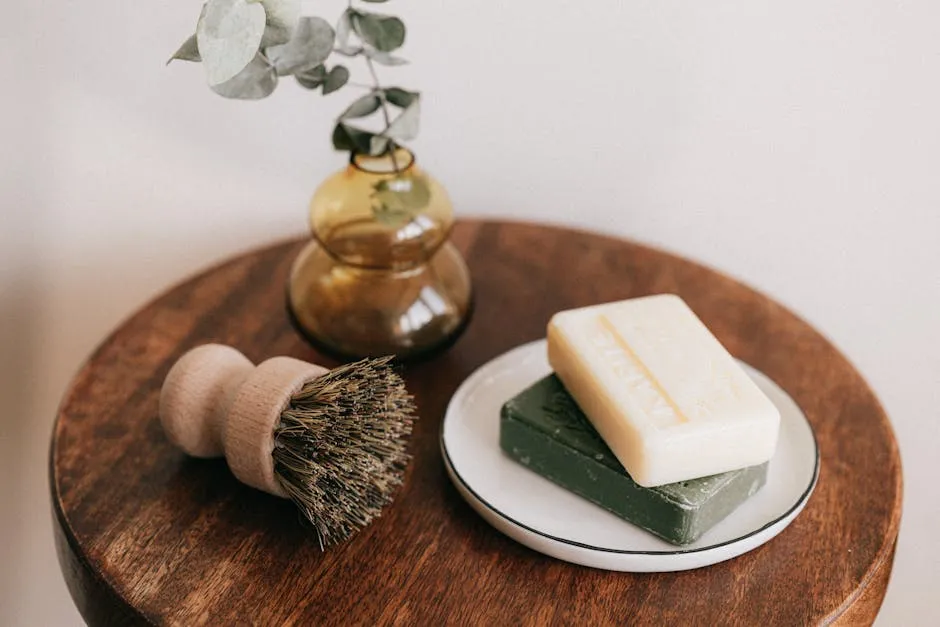
Health Benefits
Eucalyptus plants are more than just eye candy; they have remarkable health benefits too! The aromatic properties of eucalyptus leaves can work wonders for mental well-being. Their refreshing scent can uplift your mood and reduce stress. Just imagine inhaling that invigorating aroma as you sip your morning coffee. Talk about a fragrant wake-up call! Eucalyptus essential oils are all the rage in wellness circles. They’re known for their potential to alleviate headaches, clear sinuses, and even promote restful sleep. You can easily incorporate eucalyptus into your self-care routine. Try adding a few drops of Eucalyptus Essential Oil to your diffuser during meditation or yoga. It’s like giving your mind a mini-vacation! Moreover, eucalyptus has a long history of use in home remedies. From soothing coughs to relieving muscle aches, its antiseptic properties make it a staple in many households. You can even brew Eucalyptus Tea for a soothing sip that may help with respiratory issues. Who knew a plant could be so multi-talented?
Environmental Impact
Let’s give a round of applause to eucalyptus for being a sustainable plant choice! These beauties are not only great for your home but also for the environment. Eucalyptus trees thrive in various climates, making them adaptable and easy to cultivate. They grow quickly, providing a steady supply of wood and other resources without overwhelming the ecosystem. Eucalyptus plants also contribute significantly to biodiversity. They provide habitats for countless birds and insects. Their flowers attract pollinators, supporting local ecosystems. By planting eucalyptus, you’re not just beautifying your home; you’re also aiding in the conservation of wildlife. It’s a win-win! Furthermore, eucalyptus plays a vital role in carbon sequestration. These trees absorb carbon dioxide and release oxygen, helping to combat climate change. Planting eucalyptus in your garden is like giving Mother Earth a hug. The more we embrace eucalyptus, the greener our planet becomes. So, why not add this eco-friendly gem to your home?
FAQs
What are the best eucalyptus varieties for indoor growth?
Popular choices for indoor eucalyptus include Eucalyptus gunnii, known for its pleasant aroma, and Eucalyptus citriodora, or lemon eucalyptus, which has a delightful citrus scent. Both thrive indoors with proper care.
How often should I water my eucalyptus plant?
Water thoroughly until it drains from the bottom, then allow the soil to dry out before watering again. In winter, reduce watering to prevent root rot.
Can eucalyptus plants survive in low light?
Eucalyptus requires strong, direct light. While they may survive short periods in low light, prolonged exposure can lead to poor growth and leaf drop.
Is eucalyptus safe for pets?
Eucalyptus can be toxic to pets if ingested. It’s best to keep these plants out of reach of curious paws to ensure their safety.
All images from Pexels



